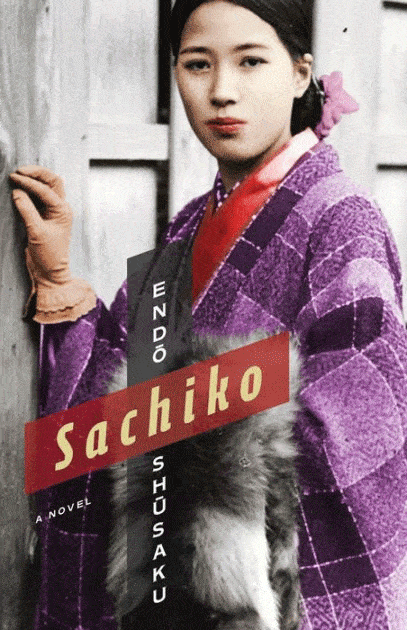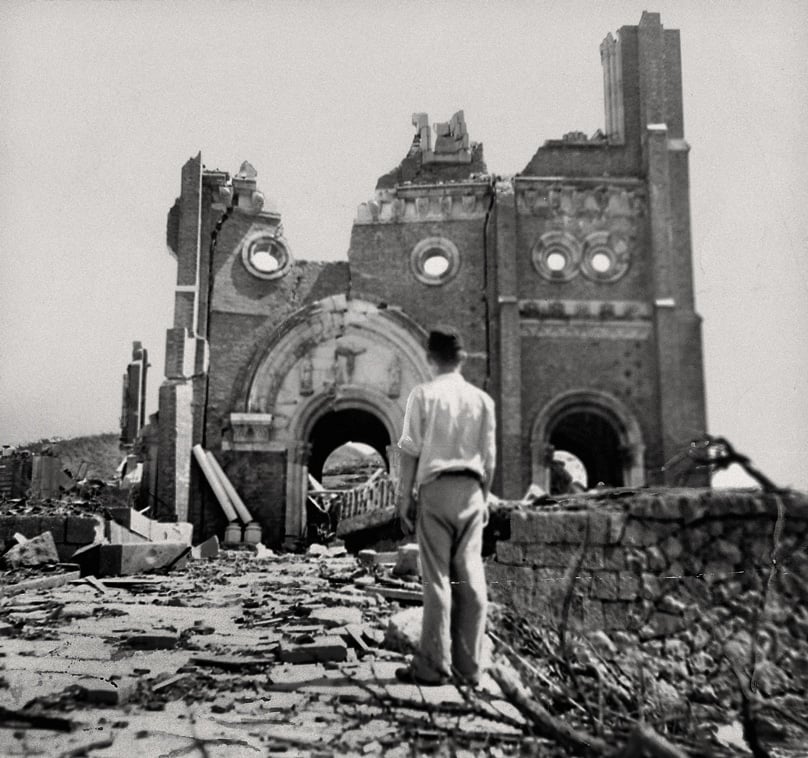 Shusaku Endo’s 1982 novel, Sachiko, published for the first time in English in 2020, is set among the small community of Japanese Catholics in Nagasaki before and during the War of the Pacific, as the Japanese call it.
Shusaku Endo’s 1982 novel, Sachiko, published for the first time in English in 2020, is set among the small community of Japanese Catholics in Nagasaki before and during the War of the Pacific, as the Japanese call it.
The novel is a double narrative, alternating chapters between the slow development of the chaste romance between two young Catholics, Shuhei and Sachiko, and the life and death of St Maximilian Kolbe, who knew the pair during his time in Nagasaki.
Shuhei and Sachiko are childhood friends, both with ancestral roots among the Urakami Christians, who famously rose up against the Tokugawa Shogunate in defence of their religion, and were brutally suppressed and dispersed to far-flung corners of Japan.
A funny incident occurs at the beginning of the book, in the early 1930s, when an undercover policeman joins Father Kolbe’s community to monitor it.

After several weeks he concludes that their monastic practices are too rigorous to pose any threat to the Japanese social order and, as he leaves, it is revealed that Father Kolbe knew all along who he was and treated him no differently than any other man wanting to live as the brothers do. Integrity of life is the Christian’s main weapon against slander and suspicion.
Humour vanishes from the novel as the war drags on and Japanese Catholics and their foreign priests come under intense scrutiny, both from officialdom and their fellow citizens, for “believing in the enemy’s religion”.
Unlike Silence, Sachiko is not a novel of faith and doubt, but a novel of faith and action.
Because the reader knows the broad historical outline of what will occur, the suspense in the slow-burn of Sachiko comes from the agency of the characters, what they will or will not resist.
Unlike Silence, Sachiko is not a novel of faith and doubt, but a novel of faith and action. None of the principal characters show any doubts about their religion, concentrating on how to live it out in the face of an overbearing wartime social order.
As Japan suffers defeat after defeat, the most intense drama takes place inside the tormented conscience of Shuhei as the inevitable end of his student draft deferral approaches.
Shuhei is tormented most acutely by the difference between what he has learned from the Church (Thou shalt not kill) and the Church’s silence in the face of the war. How can he follow an order to kill when his whole life he has repeated the Sixth Commandment?
Why is the Japanese Church silent on the dilemma facing him and other Christian conscripts?
Shuhei is tormented most acutely by the difference between what he has learned from the church (thou shalt not kill) and the church’s silence in the face of the war.
No doubt our best neo-scholastics have satisfying answers to the predicament of the conscience under duress, but no logician can speak fully to the human heart that labours under many competing demands, especially when tangled up with loyalty to family, Church and nation.
This is the unique privilege of the novel.
To say how Shuhei solves his own dilemma would spoil the ending, but the way he finally balances the need to maintain unity of conscience and action, while at the same time exhibiting the type of courage that the military demands of him, is ingenious in its simplicity and somewhat analogous to Father Kolbe’s self-sacrifice.
Shuhei decides that the only way out is through absolute outward obedience with inner freedom. His ultimate decisions will confound both knee-jerk pacifists and complacent fatalists – and perhaps some Christian purists.

Sachiko, for her part, volunteers for a gruelling factory job in solidarity with Shuhei and attends daily Mass, begging the Blessed Virgin for his safe return so they can get married.
Sachiko is a reminder that the Church itself is made up of sinful men, and probably contains about the same proportion of heroism as any given segment of the population—not much.
Shuhei’s nagging sense that the Church should, like his Urakami ancestors, stand up for the truth it teaches regardless of the consequences, will become familiar to contemporary Australian Christians, if it isn’t already.
Not everything in the novel works.
There is some laboured dialogue and the main action could have been reached more quickly. The Auschwitz scenes, which are clearly based on Endo’s reading, appear lifted almost verbatim from Viktor Frankl or Elie Wiesel. The theological conversations between the camp commandants are scarcely believable. Endo is on much firmer ground in Japan.
But overall, Sachiko is a major contribution to Catholic letters, a sadly sweet tragic romance and a clear portrayal of the individual conscience in the face of systems that would annihilate it. Sachiko is written unself-consciously with spirituality ever-present.
Sachiko is a major contribution to catholic letters, a sadly sweet tragic romance and a clear portrayal of the individual conscience in the face of systems that would annihilate it.
God and Christ speak as characters to Shuhei and the Blessed Virgin to Sachiko. After his death, Father Kolbe’s presence lingers over the two principal characters, as they remember his advice and wonder about his fate.
The translation by Van C. Gessel, who also translated Silence, Deep River and other Endo works, is clear and swift.
Sachiko by Shusaku Endo, translated by Van C. Gessel, Columbia University Press (2020)
Lucas Smith is a poet and writer from Melbourne. His work has appeared in Australian Poetry Journal, Meanjin, Southerly, Dappled Things and many other journals. He is Editor in Chief at Bonfire Books.
